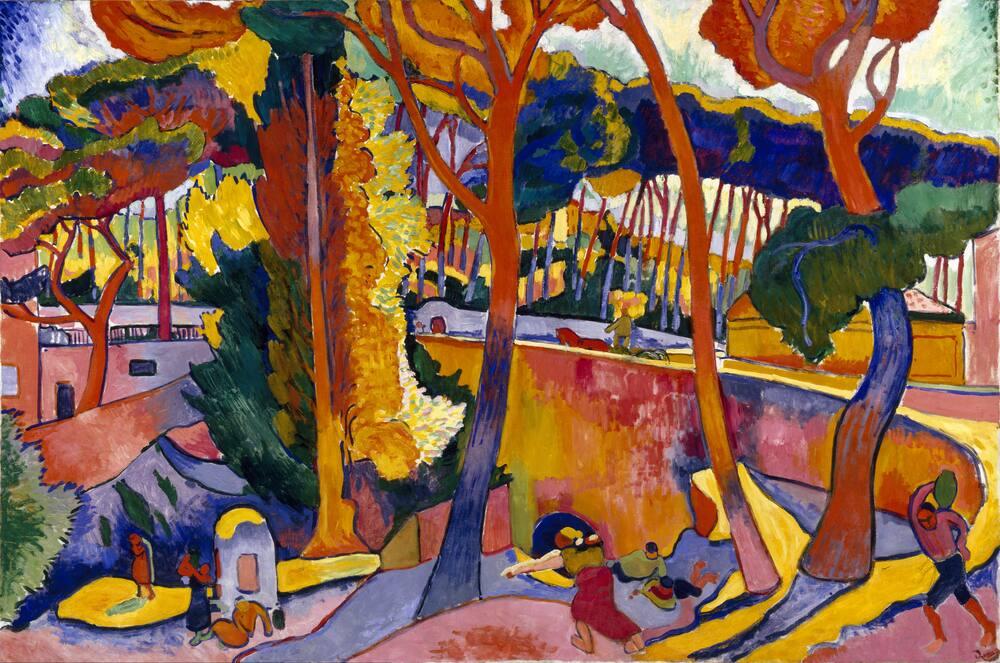View the study sheet here.

Out from the garden of Eden; on an ark in search of dry land; a departure from Haran; a search for good grazing land; a descent into Egypt; a freedom trail to a place to call home. And now, this week, we come to a halting stop. We enter a book with no narrative storyline to pull us along. The entire vista of Leviticus seems made up of layer upon layer of sacrifices, their purposes and their protocols. Where exactly is this journey going?
Andre Derain was one of the founders of the Fauve movement, which broke from Impressionism as an approach still too tied to depicting reality. The Fauvists gloried in exaggeration of color. What they shared on their canvasses honored not so much the world around them as the world within them. Their works spoke to their emotional responses, to their inner feelings about what they encountered on the outside. Their liberation of color from realistic depiction and their celebration of artistic imagination caused ridiculing critics to bestow upon them the name which they proudly embraced: Les Fauves, “wild beasts.”
Pictured here is Derain’s painting The Turning Road, L’Estaque. L’Estaque is a village in southern France. Is that where Derain has brought us to? There is an evocation of Gauguin’s Tahiti here, thousands of miles away in a very different climate and culture. Where is his road going? Is it taking us south to a real location, to Marseille? Or deep into a realm of imagination, a place he invites us to explore?
Is Leviticus an unrelatable realm of archaic rituals, once performed on altars of stone by functionaries who no longer have a role in Jewish life? Or is it a text that extends the journey to dimensions that we all carry with us?
David Philips is our discussion guide this week, and he prepares us for this week’s venture with a series of observations and questions:
1. “And g-d called to Moses”: every other time Torah says “And G-d spoke to Moses.” Except one other time, which was when G-d called Moses up to Mount Sinai. And here God called to Moses from the Tent of Meeting, which thus replaces Mount Sinai. (Tamara Cohn Eskenazi)
2. The arrangement of the offerings on the altar recreates a movement from the outside (of the animal’s body) to the center and toward greater holiness, according to the anthropologist Mary Douglas. (Leviticus as Literature).
3. A similar journey takes place as a person enters the Tabernacle, or as Moses ascends Mount Sinai .
4. But isn’t the Tent of Meeting now wherever Jews come together to wrestle with G-d? (Susan Philips) And: How do we move into our inside, holy core (Quaker Inner Light)? With fear and trembling sometimes, yes? Other times? How does the offeror who kills the bull feel?
You are not merely a traveler on this journey that is Torah. You are also a reader of its text. And how you read it can shape where it is going…wild beasts and all!
Join us here at 7:00 p.m. (PT) Thursday March 23 as we explore: where is this journey going?








